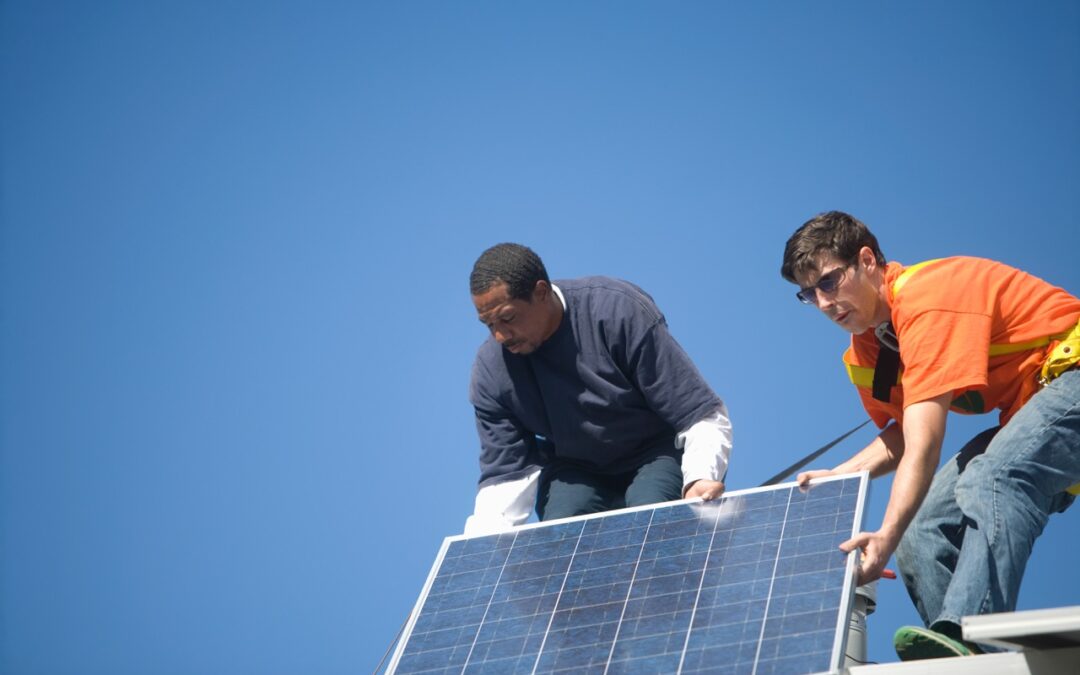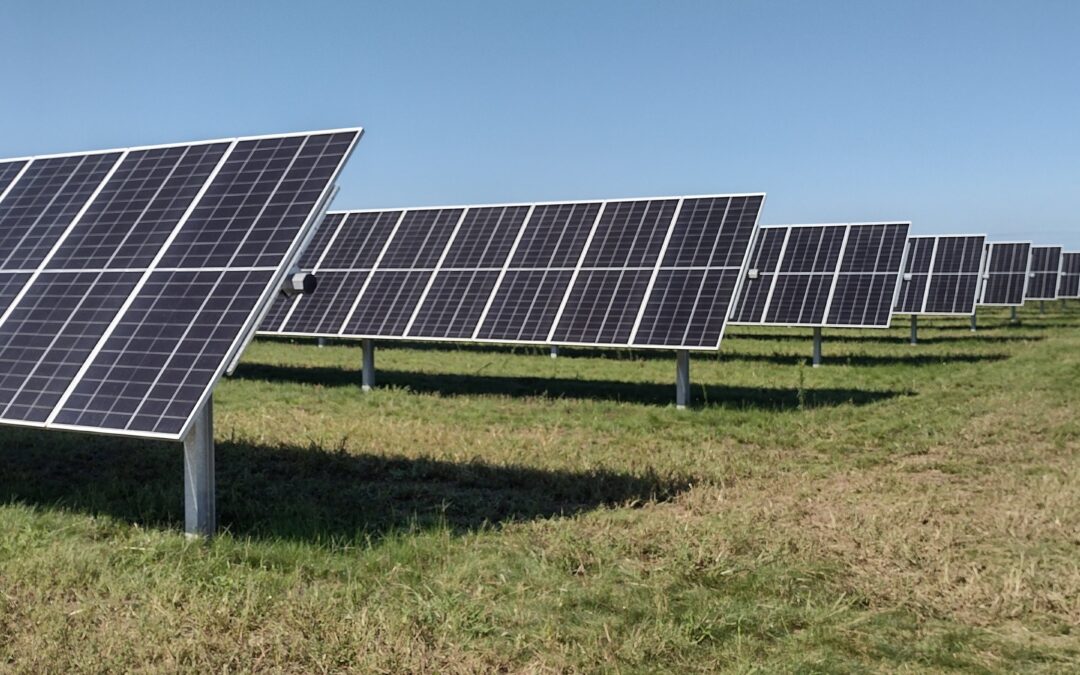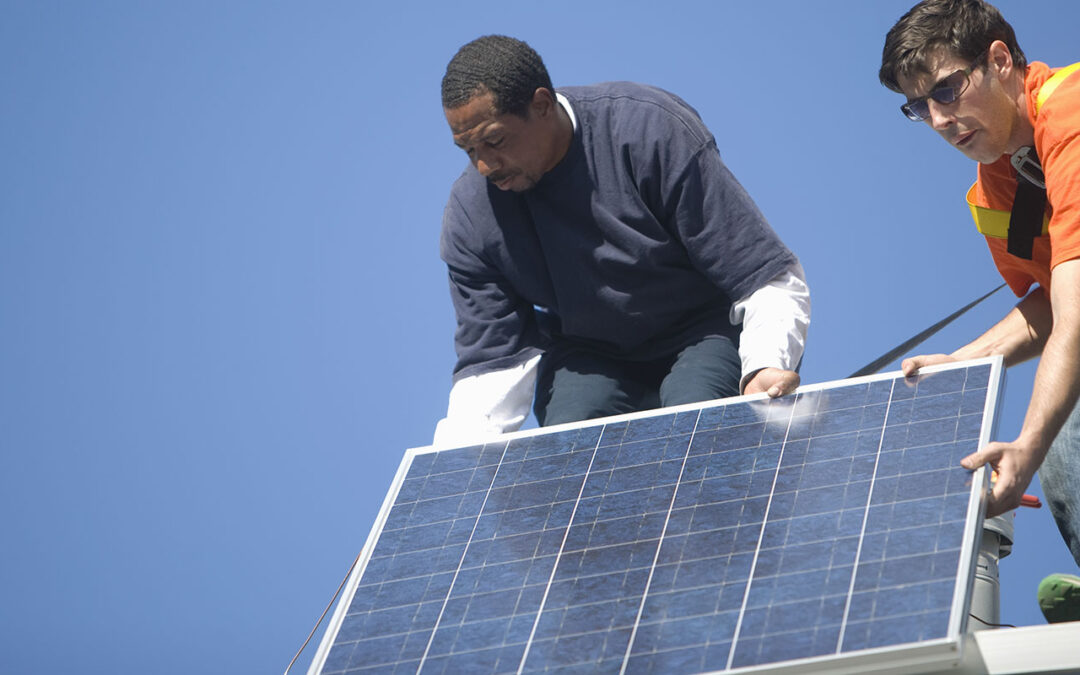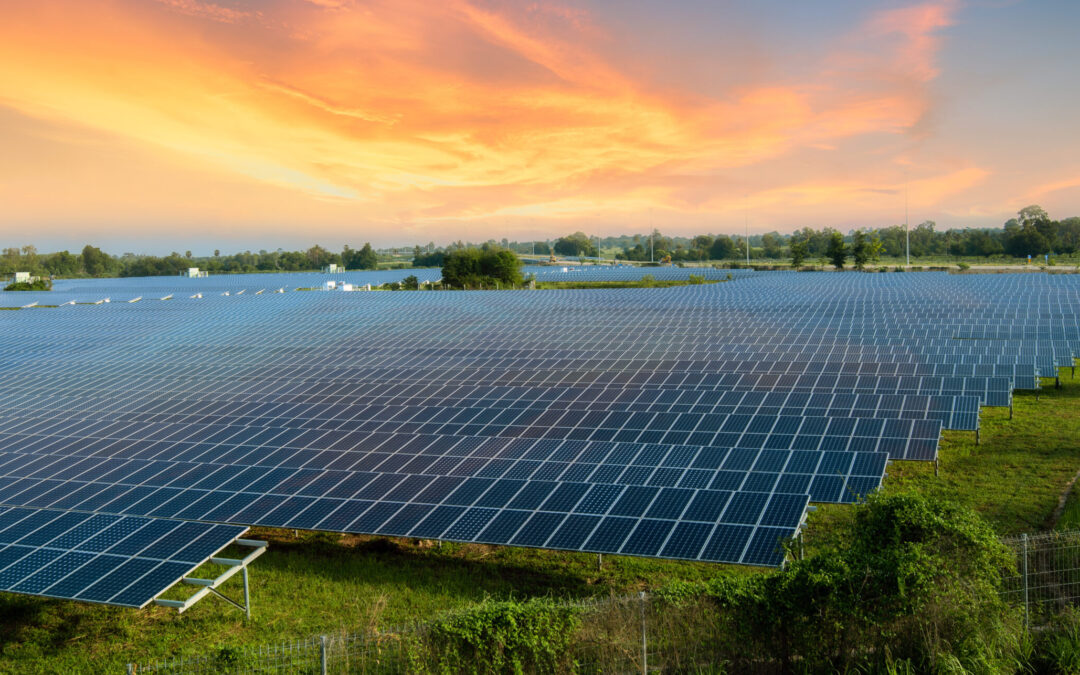
by Alex Beld | Nov 10, 2023 | Advocacy, Net Metering, Policy, Press Release, Public Service Commission, Utilities
The Public Service Commission of Wisconsin (PSCW) unanimously voted to keep net metering for Wisconsin Power and Light (Alliant) customers yesterday. Last week, PSCW denied Madison Gas & Electric’s proposal to eliminate net metering. These two decisions create certainty for Wisconsin’s solar industry and customers.
Traditional net metering is currently the most important policy tool Wisconsin has to fairly compensate rooftop solar owners and incentivize future solar installations. This model supports Wisconsin’s thriving solar industry, offers good-paying jobs, and helps Wisconsin reach its decarbonization goals. When the time comes to transition away from net metering, collaboration between clean energy advocates and utilities will be essential to ensure that the transition is equitable and values each customer’s solar installation.
The revised version of the Power Partnership would have preserved key aspects of net metering while creating new benefits. The adjusted proposal offered a durable framework that recognized the value of each customer’s solar installation to Alliant’s infrastructure. Power Partnership limited the risk to installers, ensured a steady revenue stream to solar customers, and provided a solid growth path for solar and storage.
We stand behind our work with Alliant to create a viable solution for the solar industry. We believe there is a path forward for a collaborative effort to ensure the benefits of clean energy are shared throughout the state. And we are grateful for the successful advocacy work of other intervenors and clean energy advocates in defending net metering. We look forward to continuing our collective work to ensure the benefits of clean energy are shared throughout the state.

by Alex Beld | Nov 3, 2023 | Advocacy, Net Metering, Policy, Press Release, Public Service Commission, Utilities
The Public Service Commission of Wisconsin (PSCW) delivered a unanimous decision on Friday to keep net metering in the Madison Gas & Electric (MGE) territory. This action is a win, not just for MGE customers but for all of Wisconsin.
“It almost felt as though it was a half-hearted proposal, and so I didn’t feel like there was enough information to support authorizing it [MGE’s proposed net metering change],” said PSCW Chairperson Rebecca Valq. “… for Wisconsin to have a consistent approach to net metering, I would not approve this proposal.”
There was overwhelming support to keep net metering in MGE’s service territory. There were 500 members of the public and 14 intervenors, including RENEW, who opposed MGE’s proposed net metering changes. This collective effort played a vital role in ensuring rooftop solar will remain financially viable for MGE solar customers.
This decision from the Public Service Commission of Wisconsin represents a major win for rooftop solar and the solar industry in Wisconsin. Net metering is fundamental in ensuring that rooftop solar owners are properly incentivized and compensated for their energy generation. We look forward to working with other utilities to ensure residential rooftop solar and large-scale renewable projects remain viable tools for meeting Wisconsin’s decarbonization goals.
Net metering has a direct impact on the local economy. The installation, maintenance, and servicing of rooftop solar systems creates employment opportunities, providing long-term benefits for Wisconsin communities and businesses. RENEW is celebrating the decision made by the PSCW today to ensure equitable access to solar for all Wisconsin families and create certainty for local solar installers.
The collective efforts of our members, partners, and the general public were crucial in the effort to protect net metering. Thank you to everyone who made their voices heard in the MGE rate case. We look forward to hearing from the PSCW again later this November when they deliver their decision for the Alliant Energy rate case.

by RENEW Wisconsin | Sep 25, 2023 | Advocacy, Net Metering, Policy, Public Service Commission, Utilities
RENEW Wisconsin and Alliant Energy have agreed to preserve net metering for two years and have created a clear pathway for future rooftop solar installations. At the end of the two-year period, new Alliant solar customers will shift away from net metering and into Power Partnership, a proposal that will support the sustainability of the solar industry.
Power Partnership preserves key aspects of net metering while creating new benefits. The agreement is a compromise that offers a durable framework that recognizes the value of each customer’s solar installation to Alliant’s infrastructure. Power Partnership limits the risk to installers, ensures a steady revenue stream to solar customers, and provides a solid growth path for solar and storage.
Additionally, after net metering is fully phased out, Power Partnership will continue to provide customers and installers with the information they need to estimate payback periods for new installations. This was a non-negotiable aspect of RENEW’s agreement with Alliant.
This is a win for the solar industry and wouldn’t be possible without the incredible grassroots efforts of every person and organization who submitted public comments and testimony to the Public Service Commission of Wisconsin. This unified action helped bring Alliant to the table.
These collective efforts gave us the opportunity to bargain from a strong position and have a voice in crafting what a net metering transition in Wisconsin looks like. This agreement creates certainty for the solar industry and the customers who support it, in both the short and long term.
Key Aspects of the Proposal:
- New customers with installations under 20 kW will be able to choose between net metering and Power Partnership until Dec. 31, 2025.
- Net metering customers will receive legacy treatment until 2032.
- Bill credits earned under Power Partnership will carry over on a monthly basis for one year.
- Power Partnership will expand access to installations between 20 kW and 75 kW.
- Alliant will create a payback calculator to help customers plan financially for their solar installations.
- Customers will have a minimum charge of $10 per month for installations up to 20 kW and $15 per month for installations between 20-75 kW. This charge will not apply to current net metering customers.
Transitions away from net metering are rarely this favorable to solar customers, and we are grateful for Alliant’s collaboration and the organized support of clean energy advocates. RENEW still believes that net metering is the best policy for Wisconsin’s current solar industry, and our opposition to MGE’s proposal continues. We hope that we can depend on your support in that effort.

by Michael Vickerman | Sep 13, 2023 | PSC Priorities, Public Service Commission, RENEW Wisconsin, Renewables, Solar, Utilities
A 200-megawatt (MW) solar project, Silver Maple Solar, has been proposed in Fond du Lac and Winnebago Counties. If approved, Silver Maple Solar is expected to begin producing enough clean energy to power 35,000 Wisconsin homes by the end of 2025.
Solar power projects larger than 100 MW must gain approval from the Public Service Commission of Wisconsin (PSCW) before they can proceed to construction. Along the way, there are opportunities for public comment, including at the PSCW. Earlier this summer, RENEW Wisconsin submitted testimony in support of Silver Maple Solar to the PSCW. Now that the public comment period is open, you can share your support for this project as well.
Silver Maple Solar represents a significant economic investment in rural southeastern Wisconsin, providing steady revenues to area landowners and communities while generating emission-free renewable electricity for more than 30 years. The developer of the project, Leeward Renewable Energy, has provided a high-level overview and a map of the project to help the public better understand its benefits.
Since 2019, the PSCW has issued approvals for 17 solar power projects across Wisconsin, totaling 3,249 MW. With the addition of Silver Maple, solar energy will make up 10% of Wisconsin’s electricity production, the highest share for a state in the Upper Midwest.
Help us demonstrate Wisconsin’s enthusiastic support for projects like this by submitting a comment in support of Silver Maple Solar. Be sure to specifically reference the project and the benefits that it can bring to Wisconsin. The deadline to submit comments is October 13, 2023.
We’ve included a sample message to help you get started. Please keep in mind that the PSCW allows one comment per case and that customizing your message will have a greater impact.
Sample Comment
I’m writing in support of the Silver Maple Solar, under review in Docket No. 9813-CE-100. This project would support local economies and keep energy dollars in state by producing homegrown, renewable energy right here in Wisconsin.
Beyond the economic benefits, the Silver Maple Solar project will also help to displace carbon dioxide, support grid stability, and provide Wisconsinites with an affordable source of electricity. With available land and appropriate infrastructure, projects like this make sense for Wisconsin.
I respectfully encourage the PSCW to rule that Silver Maple Solar is in the public interest and issue a permit enabling the project to proceed to construction. Thank you for your consideration of my views.

by Alex Beld | Jul 19, 2023 | Electrification, Solar, Utilities
Energy Concepts LLC (Energy Concepts) has requested a waiver of individual electric metering requirements for the Prairie Heights Residences, a multifamily residence under development in Eau Claire. The petition presented to the Public Service Commission of Wisconsin (PSCW) seeks this waiver to simplify the integration of high-performance building insulation, electrically powered Variable Refrigerant Flow (VRF) heat pump technology, and onsite solar into this new apartment building.
The development team—Gerrard Companies (developer), West CAP (property operator/manager) and Energy Concepts (energy system designer)—are collaborating to achieve significant reductions in overall building energy usage, minimizing tenant exposure to high energy costs. Meter consolidation is crucial to optimize the cost-effectiveness of these energy measures and pass these savings to tenants in the form of avoided utility payments.
The development team is specifically seeking to waive Wis. Admin. Code 113.0803 for the project. The Wis. Admin. Code 113.0803 states that any residential building constructed after March 1, 1980 with multiple units will be required to have a separate electric meter for each unit. This extends to any residential building with multiple units that undergoes renovations after March 1, 1980.
Allowing meter consolidation for this project is key for the implementation of the two solar arrays planned for the new apartment building. The grid-tied solar photovoltaic arrays will produce 350kW, and though it will be tied directly to the main electrical grid it’s likely only a small percent of the system’s output will be exported onto the grid, due to the relatively constant energy requirements of a building-wide VRF heat pump system
Electrically powered VRF heat pump technology is designed to provide both heating and cooling using the same equipment. Heat pumps also transfer heat rather than converting it from a fuel source, which allows properly installed systems to deliver as much as three times more heat energy to a home than the electrical energy it consumes. When paired with renewable energy, as in this case, heat pumps are a particularly effective solution for reaching decarbonizing goals.
The technologies planned for the affordable housing development are relatively new and were unavailable to developers when the individual electric metering requirements were created under Wis. Admin. Code 133.0803. These requirements are an economic hurdle for projects like the Prairie Heights Residences and removing this hurdle allows the developer to simplify the installation of their solar arrays. Rather than connecting an array, or in this case arrays, to 60 individual units the waiver will allow for the arrays to be connected to a single meter.
The array is expected to supply 20% of the electricity estimated to be consumed by residences in both their individual units and shared spaces. Pairing the array with the high-performance insulation and an electric heat pump, which will heat and cool the building, it is expected that tenants will experience an exceptionally efficient heating and cooling system that further insulates them from high energy bills commonly experienced with traditional heating and cooling systems.
The development team’s use of tax credits and incentives, combined with these energy-saving, CO2-reducing measures to build new affordable housing is particularly innovative. It will significantly reduce the energy burden on the low to moderate income residents the project is for. West CAP plans to reserve 85% of its 60 units for tenants at or below 60% of the median county income, with 12 units specifically reserved for homeless or disabled veterans.
RENEW Wisconsin believes the approach taken by the Prairie Heights project team to incorporate energy savings and CO2 emissions reductions in new multifamily housing is exemplary and should serve as a model for other development groups. We have submitted comments in support of the waiver and are watching the case closely. The comment period remains open to the public through July 25, 2023.

by Michael Vickerman | Jun 29, 2023 | Solar, Utilities, Utility Scale
Wisconsin electric providers added significantly more renewable energy content to their electricity supplies in 2022, according to a June 2023 report issued by the Public Service Commission. Overall, renewable energy accounted for 16.2% of Wisconsin electricity sales in 2022, increasing more than two percentage points from the 13.8% level recorded in 2021.
Renewable energy performance varied widely among individual electric providers. At the high end, Northern States Power-Wisconsin (Xcel-NSPW) reported that 44.5% of the electricity it sold in 2022 came from renewable energy sources (see Table 1). Though making up only 10% of Wisconsin electricity sales, Xcel-NSPW accounts for nearly 27% of the state’s total renewable electricity supply. Most of the utility’s added renewable energy supplies came from wind power projects in Minnesota and the Dakotas.
Wisconsin Power and Light (Alliant-WPL) also posted healthy gains in 2022, rising from 20.2% in 2021 to 24% last year. Indeed, of the 11.3 million megawatt-hours (MWh) of renewable energy sold in Wisconsin in 2022, about one-half of that total (5.7 million MWh) flowed through either Xcel-NSPW or Alliant-WPL to their customers.
Under the state’s Renewable Portfolio Standard (RPS), electric providers must track their renewable energy sales from the previous year and provide those results to the Public Service Commission. The 2022 results are retrievable from the Commission staff memo issued in Docket 5-RF-2022, specifically Appendices D and E of PSC REF#: 470111. These annual reports also compile renewable electricity provided through utility renewable energy tariffs, such as community solar offerings.
The PSC’s RPS reports break down aggregate renewable power totals by resource and state of origin. Imports from other states accounted for nearly two-thirds of total renewable electricity sales (64% vs. 36%). In 2022, wind projects generated 74% of the renewable electricity sold in Wisconsin, followed by hydro (14%), solar (7%), and biomass (4%). Moving in with greater granularity, wind power originating from out-of-state sources accounted for 59% of total renewable energy sales, followed by in-state wind (15%), in-state hydro (10%, and in-state solar (6%).
The percentage of out-of-state wind generation relative to total renewable electricity sales has increased dramatically since 2017, rising from 48% to 59%.
Tracking individual utility performance
In the wake of utility commitments to substantially reduce carbon emissions by 2030 and reach net zero emissions by 2050, these compliance reports take on added importance in tracking electricity provider progress in meeting their goals. Table 1 below shows that while some utilities, such as Xcel-NSPW and Alliant-WPL, have responded quickly to the challenge, others, such as We Energies, have made little headway. As documented by these annual reports, the volume of renewable MWh sold to We Energies customers has declined since 2017.
Bear in mind that We Energies, the state’s largest electric utility, accounts for about one-third of total electric sales in Wisconsin (23.5 million MWh out of 69.9 million MWh). Of that total, only 1.46 million MWh, or 6.2%, were generated from renewable resources. While We Energies derives a significant portion of its electricity supply from the Point Beach Nuclear power plant (8.7 million MWh in 2022), it will be no small undertaking to acquire solar capacity quickly enough to overcome the lackluster results of recent years.
We Energies owns approximately 30 MW of the 1,000 MW of solar generating capacity presently operating in Wisconsin. Though its first two major solar investments—Badger Hollow 2 (50 MW) and Paris (150 MW)—are expected to commence operations in the fourth quarter of this year, their output won’t deliver a noticeable boost to We Energies’ renewable energy content until 2024, which will be reflected in the Commission’s 2025 RPS report. We Energies’ share of Badger Hollow 2 and Paris should generate 400,000 MWh/year, equivalent to 1.7% of We Energies’ 2022 sales.
We Energies will need to greatly accelerate the pace of their generation transition to become 20% renewably powered by 2030, effectively tripling the 1.46 million MWh recorded in 2022.
In contrast, 69% of the electricity supplies serving Xcel Energy’s Upper Midwest territory came from carbon-free sources in 2022, according to its corporate sustainability report. (Note: the 69% number includes output from Xcel Energy’s two nuclear power units in Minnesota). By 2030, the percentage of carbon-free generation is expected to rise to 81%. The report also states that, by 2029, coal generation will no longer supply Xcel’s Upper Midwest territory, including NSPW.
This spring, Xcel-NSPW committed to purchasing the output from the Apple River solar farm in Polk County, adding 100 MW of solar power and 100 MW of storage capacity to its generation portfolio. Developed by National Grid Renewables, Apple River should be online sometime in 2025.
And by July 2024, Alliant-WPL will have completed and placed in service close to 1,100 MW of solar generating capacity in Wisconsin, which will account for 20% of that utility’s sales in the Badger State.




